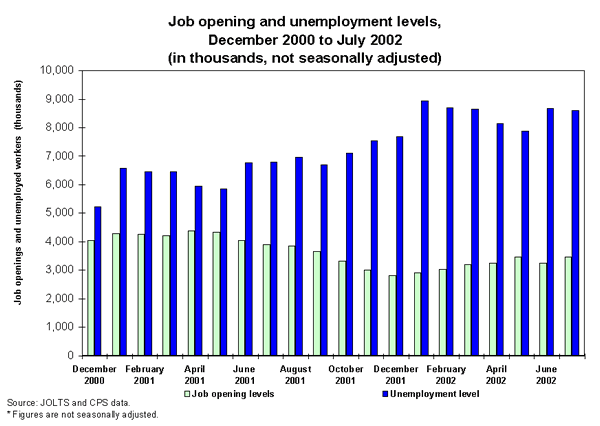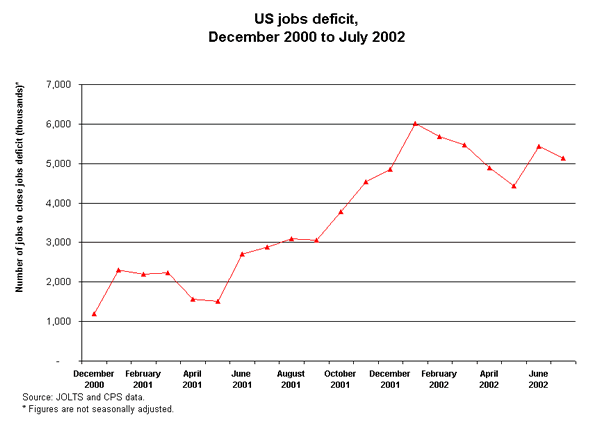Snapshot for October 2, 2002 [revised October 4].
Unemployment and the U.S. jobs deficit
Figures released Friday by the Labor Department showed unemployment remains high despite a tiny dip to 5.6% in September from 5.7% in August. But a focus on the unemployment rate alone provides an incomplete picture of U.S. labor markets.
A more comprehensive picture is drawn by considering the current jobs deficit: the gap between the number of workers unemployed and the number of job openings that businesses are seeking to fill. This comparison between labor supply and labor demand can dispel the misconception that much or most unemployment stems from shortcomings of those without jobs, such as lack of diligence in searching for work. It becomes clear that in the current economy, millions of workers will fail to find work no matter how hard they search.
Recent data from the Labor Department’s Job Opening and Labor Turnover Survey (JOLTS) indicate that demand for labor remains weak. As of July 2002, the most recent month for which data were available, the number of job openings that businesses were seeking to fill was 3.46 million; yet unemployment stood at 8.6 million. This means the labor market had a jobs deficit of 5.13 million jobs. The graph below indicates that, since December of 2000, the labor market has grown increasingly out of synch, with many more workers unemployed than jobs available.

The jobs deficit has grown considerably during the recession. In the year from July 2001 to July 2002, the number of job openings declined by 446,000 while unemployment increased by 1.8 million. Worse, as the graph below shows, in the one and a half years from December 2000 to July 2002, the jobs deficit increased by nearly four million. It does not bode well for unemployment that, not only are more unemployed workers seeking jobs, but there also are fewer jobs to go around. For the jobless rate to decline significantly, employers will have to create millions more jobs, and that is not likely until businesses see increased demand for their goods and services.

This week’s Snapshot by EPI economist Jeffrey Wenger.
Check out the archive for past Economic Snapshots.
